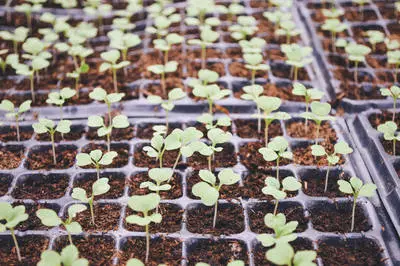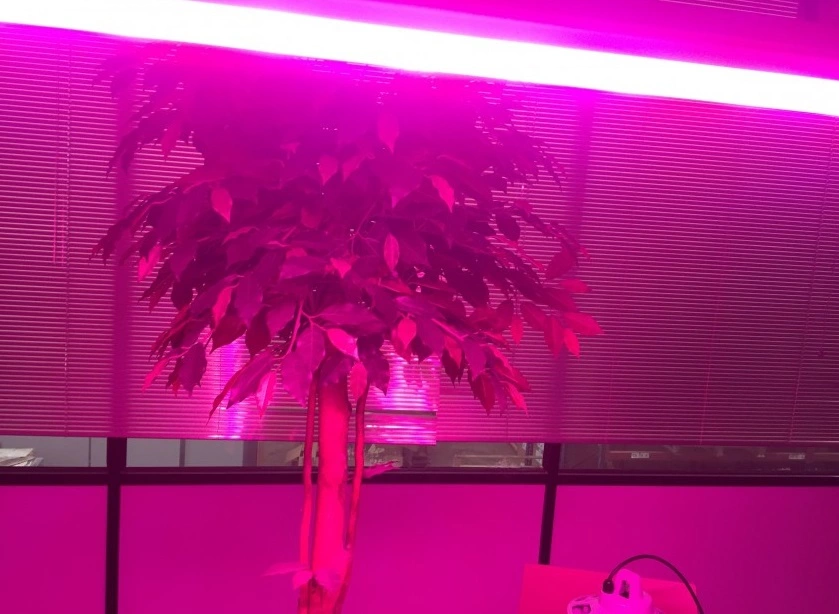Join the latest tendency of indoor cultivating with LED lighting. It doesn’t matter if you live in the heart of the city and don’t have a balcony or terrace suitable for growing plants. If you decide to create a space for growing plants at home, you will not only improve the aesthetics of your home. You will also be improving air quality and providing yourself with organic and delicious food.
We will detail the main aspects to consider so our indoor allotment works perfectly.
Space required for indoor cultivation
Growing plants indoors can take up as much or as little space as we wish. A window, a table, a shelf or a whole room: we set the limits of our garden.
We will have to adapt the area to make the task as comfortable and clean as possible, depending on the location of the future plants.
After all, we are using significant amounts of soil and water at home.
How to choose LED grow lights
Light is fundamental in the photosynthesis process, a chemical process vital to the life of plants. Normally, in the absence of light, plants grow tall, thin and without leaves or, at most, some not fully extended leaves. Obviously, if the plant does not receive all the light it needs, it will neither flower nor bear fruit. For our plants to grow and develop properly we have to provide them with enough light and this means choosing the right grow light. For this we have to consider several aspects.
Light intensity
The early stages of plant growth, when they are in the so-called seedling stage, require a lot of light and even the sunniest window may not be enough.

Having dedicated LED grow lights allows us to control exactly the amount of light that our plants get. The most common recommendation is to place our LED grow lamp between 5 and 7 centimeters above the seedling. As it grows and develops more leaves, we will gradually move the lamp up so that it is always stays between 8 cm and 10 cm above the foliage. As the LED lights emit hardly any heat there is no danger of burning the plants.
How many hours of light do plants need?
It does depend on the type of crop, however, most vegetables and greens require up to 18 hours of light per day. Hours of darkness are equally important for healthy growth. The best way to keep track of the light hours is to use a timer that automatically turns the lights on and off throughout the day.
Light color
The best lighting is a natural light. As for the LED grow lights, such as the ones we supply in our online store, they combine different wavelengths (red light and blue light) in the most beneficial ratio for the growth of the plants.

Advantages of LEDs grow lights
LEDs are superior to traditional lighting in several aspects and their application for growing plants indoors is no exception. The main advantages of LEDs include:
- Lower energy consumption compared to traditional alternatives.
- They generate almost no heat, so they can be placed closer to the plants without danger.
- Longer lifespan, LEDs last much longer so there is no need to replace grow lamps frequently.
- Less space is necessary. As we can place the light close to the plants, less space is needed.
- With LEDs, the spectrum of light emitted can be optimized, making it even more efficient.
- By working at lower temperatures and not using chemicals such as mercury, the LED is very safe to use.
- Improved production. Different studies have shown that the use of LEDs improves quantity and quality of the plants growth.
If you want more details on how LEDs improve and double the growth of plants, see our post on how to do so with LED lights.
Common mistakes when choosing LED grow lights
- Placing lights at an incorrect distance.
- Purchasing LEDs too dim in brightness.
- Choosing the wrong type of LED for the type of plant or choosing models of low quality.
- Applying a light/dark cycle that does not provide sufficient hours of light to the plants.
Other aspects to be taken into account for indoor gardening
Apart from the light we use in our indoor garden, we have to pay attention to other factors such as temperature, which should be between 18ºC and 24ºC, although it can vary more or less by 6ºC.
Humidity is also a factor that we must pay attention to, especially when we use the heating or air conditioning. If we see that the leaves of the plants turn brown or start to fall we have to regularly spray the plants with water or install a humidifier.
Finally, the soil is very important. We can buy a conventional soil in any specialized store or we can create it ourselves. Either way, the soil must remain loose, it must be drained well and contain enough organic matter to nourish our plants. Another alternative is to choose the increasingly popular hydroponic growing.


